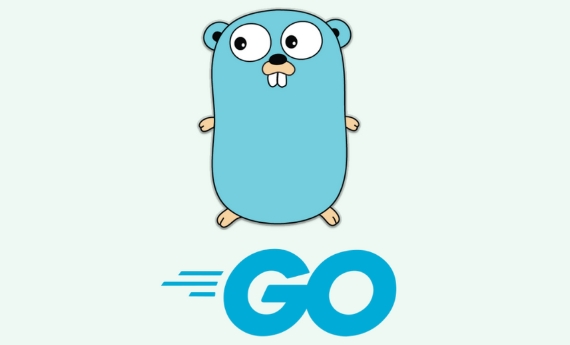Go provides a variety of plug-in architecture implementation methods. 1. Use the plugin package to load shared libraries when running on Linux/macOS, but it needs to be compiled with Go and the plug-in symbols need to be clearly signed; 2. Through interface abstraction and plug-in registration mechanism, plug-in can be determined and called uniformly during the compilation period, which is suitable for the scenarios of co-compiling between main programs and plug-ins; 3. Use HTTP or RPC to realize remote plug-in communication, support cross-language and distributed deployment, which is suitable for plug-in independent operation; it should be noted that the plug-in package has limited support on Windows, types cannot be shared between plug-ins, hot updates need to deal with concurrency and state consistency, and the design should be as simple as possible to reduce maintenance costs.

Go's Plugin Architecture is very useful when building scalable, modular applications. If you want your application to support runtime loading capabilities, or allow third-party development plug-ins, then designing a reasonable Go plug-in architecture is key.

However, Go's own support for plugins is not as flexible as some dynamic languages, but it still provides some mechanisms to implement similar functionality. Let’s take a look at some practical methods and precautions.
Use plugin package to implement basic plugin loading
Go's own plugin package allows you to load shared libraries in .so (Linux/macOS) or .dll (Windows) formats at runtime. This is the official recommendation method, but there are certain restrictions.

Steps to use:
- The plug-in must be compiled into a shared object file in Go
- Functions or variables exported by plug-in need to have clear signatures
- The main program accesses plug-in content through symbolic name
For example, suppose you have a plugin that defines a function:

// pluginmain.go
package main
import "fmt"
var V int = 5
func F() { fmt.Println("Hello, function") }Then you can load it like this:
p, err := plugin.Open("example.so")
if err != nil {
log.Fatal(err)
}
v, err := p.Lookup("V")
if err != nil {
log.Fatal(err)
}
*v.(*int) = 7
f, err := p.Lookup("F")
if err != nil {
log.Fatal(err)
}
f.(func())()Note: This method can only be used for Linux/macOS, and Windows support is limited; and each modification of the plug-in requires recompilation.
Use interface abstract plug-in registration mechanism
If you do not rely on dynamic loading, but instead hope that the plug-in will be determined during the compilation period, you can use the "register interface" method. This method is more stable and has better compatibility.
Basic ideas:
- Define a unified plug-in interface
- Each plugin implements this interface
- Register the plugin at initialization
- The main program calls plug-in logic through the interface
for example:
type Plugin interface {
Name() string
Run()
}
var plugins = make(map[string]Plugin)
func Register(name string, p Plugin) {
plugins[name] = p
}Plugin implementation:
type MyPlugin struct{}
func (p *MyPlugin) Name() string { return "myplugin" }
func (p *MyPlugin) Run() { fmt.Println("Running myplugin") }
func init() {
plugin.Register("myplugin", &MyPlugin{})
}This can be called in the main program:
for name, p := range plugin.Plugins {
fmt.Printf("Found plugin: %s\n", name)
p.Run()
}This approach is suitable for most plug-in requirements, especially if you want the plug-in to compile with the main program.
Combining HTTP or RPC to achieve remote plug-in communication
If you want the plug-in to run in a standalone process or even deploy on different servers, you can consider making the plug-in a service and communicating over HTTP or RPC.
Advantages include:
- Plugins can be written in other languages
- Plugin update does not affect the main program
- Easier permission control and resource isolation
A common practice is to define a unified set of API interfaces, and the main program calls these interfaces as a client. For example:
- Plugin exposes
/runinterface to receive execution commands - Plugin exposes
/infoto obtain meta information - The main program dynamically routes requests according to the plug-in type
Although this method increases network overhead, it is very practical in distributed scenarios.
Tips and precautions
-
pluginpackage only supports Linux and macOS, and the behavior on Windows may be unstable - Types cannot be shared between plugins unless they are referenced from the same import path
- If you plan to use plugins to do hot updates, remember to handle concurrency and state consistency
- The simpler the plug-in mechanism, the better, and complex designs can easily lead to maintenance costs.
Basically that's it. Although Go's plug-in mechanism is not as flexible as scripting language, it can also meet the needs of most scenarios in combination with interface abstraction and modular design.
The above is the detailed content of Implementing Go Plugin Architectures. For more information, please follow other related articles on the PHP Chinese website!

Hot AI Tools

Undress AI Tool
Undress images for free

Undresser.AI Undress
AI-powered app for creating realistic nude photos

AI Clothes Remover
Online AI tool for removing clothes from photos.

Clothoff.io
AI clothes remover

Video Face Swap
Swap faces in any video effortlessly with our completely free AI face swap tool!

Hot Article

Hot Tools

Notepad++7.3.1
Easy-to-use and free code editor

SublimeText3 Chinese version
Chinese version, very easy to use

Zend Studio 13.0.1
Powerful PHP integrated development environment

Dreamweaver CS6
Visual web development tools

SublimeText3 Mac version
God-level code editing software (SublimeText3)
 Is golang frontend or backend
Jul 08, 2025 am 01:44 AM
Is golang frontend or backend
Jul 08, 2025 am 01:44 AM
Golang is mainly used for back-end development, but it can also play an indirect role in the front-end field. Its design goals focus on high-performance, concurrent processing and system-level programming, and are suitable for building back-end applications such as API servers, microservices, distributed systems, database operations and CLI tools. Although Golang is not the mainstream language for web front-end, it can be compiled into JavaScript through GopherJS, run on WebAssembly through TinyGo, or generate HTML pages with a template engine to participate in front-end development. However, modern front-end development still needs to rely on JavaScript/TypeScript and its ecosystem. Therefore, Golang is more suitable for the technology stack selection with high-performance backend as the core.
 How to install Go
Jul 09, 2025 am 02:37 AM
How to install Go
Jul 09, 2025 am 02:37 AM
The key to installing Go is to select the correct version, configure environment variables, and verify the installation. 1. Go to the official website to download the installation package of the corresponding system. Windows uses .msi files, macOS uses .pkg files, Linux uses .tar.gz files and unzip them to /usr/local directory; 2. Configure environment variables, edit ~/.bashrc or ~/.zshrc in Linux/macOS to add PATH and GOPATH, and Windows set PATH to Go in the system properties; 3. Use the government command to verify the installation, and run the test program hello.go to confirm that the compilation and execution are normal. PATH settings and loops throughout the process
 How to build a GraphQL API in golang
Jul 08, 2025 am 01:03 AM
How to build a GraphQL API in golang
Jul 08, 2025 am 01:03 AM
To build a GraphQLAPI in Go, it is recommended to use the gqlgen library to improve development efficiency. 1. First select the appropriate library, such as gqlgen, which supports automatic code generation based on schema; 2. Then define GraphQLschema, describe the API structure and query portal, such as defining Post types and query methods; 3. Then initialize the project and generate basic code to implement business logic in resolver; 4. Finally, connect GraphQLhandler to HTTPserver and test the API through the built-in Playground. Notes include field naming specifications, error handling, performance optimization and security settings to ensure project maintenance
 Go sync.WaitGroup example
Jul 09, 2025 am 01:48 AM
Go sync.WaitGroup example
Jul 09, 2025 am 01:48 AM
sync.WaitGroup is used to wait for a group of goroutines to complete the task. Its core is to work together through three methods: Add, Done, and Wait. 1.Add(n) Set the number of goroutines to wait; 2.Done() is called at the end of each goroutine, and the count is reduced by one; 3.Wait() blocks the main coroutine until all tasks are completed. When using it, please note: Add should be called outside the goroutine, avoid duplicate Wait, and be sure to ensure that Don is called. It is recommended to use it with defer. It is common in concurrent crawling of web pages, batch data processing and other scenarios, and can effectively control the concurrency process.
 Go embed package tutorial
Jul 09, 2025 am 02:46 AM
Go embed package tutorial
Jul 09, 2025 am 02:46 AM
Using Go's embed package can easily embed static resources into binary, suitable for web services to package HTML, CSS, pictures and other files. 1. Declare the embedded resource to add //go:embed comment before the variable, such as embedding a single file hello.txt; 2. It can be embedded in the entire directory such as static/*, and realize multi-file packaging through embed.FS; 3. It is recommended to switch the disk loading mode through buildtag or environment variables to improve efficiency; 4. Pay attention to path accuracy, file size limitations and read-only characteristics of embedded resources. Rational use of embed can simplify deployment and optimize project structure.
 Go for Audio/Video Processing
Jul 20, 2025 am 04:14 AM
Go for Audio/Video Processing
Jul 20, 2025 am 04:14 AM
The core of audio and video processing lies in understanding the basic process and optimization methods. 1. The basic process includes acquisition, encoding, transmission, decoding and playback, and each link has technical difficulties; 2. Common problems such as audio and video aberration, lag delay, sound noise, blurred picture, etc. can be solved through synchronous adjustment, coding optimization, noise reduction module, parameter adjustment, etc.; 3. It is recommended to use FFmpeg, OpenCV, WebRTC, GStreamer and other tools to achieve functions; 4. In terms of performance management, we should pay attention to hardware acceleration, reasonable setting of resolution frame rates, control concurrency and memory leakage problems. Mastering these key points will help improve development efficiency and user experience.
 How to build a web server in Go
Jul 15, 2025 am 03:05 AM
How to build a web server in Go
Jul 15, 2025 am 03:05 AM
It is not difficult to build a web server written in Go. The core lies in using the net/http package to implement basic services. 1. Use net/http to start the simplest server: register processing functions and listen to ports through a few lines of code; 2. Routing management: Use ServeMux to organize multiple interface paths for easy structured management; 3. Common practices: group routing by functional modules, and use third-party libraries to support complex matching; 4. Static file service: provide HTML, CSS and JS files through http.FileServer; 5. Performance and security: enable HTTPS, limit the size of the request body, and set timeout to improve security and performance. After mastering these key points, it will be easier to expand functionality.
 Go select with default case
Jul 14, 2025 am 02:54 AM
Go select with default case
Jul 14, 2025 am 02:54 AM
The purpose of select plus default is to allow select to perform default behavior when no other branches are ready to avoid program blocking. 1. When receiving data from the channel without blocking, if the channel is empty, it will directly enter the default branch; 2. In combination with time. After or ticker, try to send data regularly. If the channel is full, it will not block and skip; 3. Prevent deadlocks, avoid program stuck when uncertain whether the channel is closed; when using it, please note that the default branch will be executed immediately and cannot be abused, and default and case are mutually exclusive and will not be executed at the same time.






